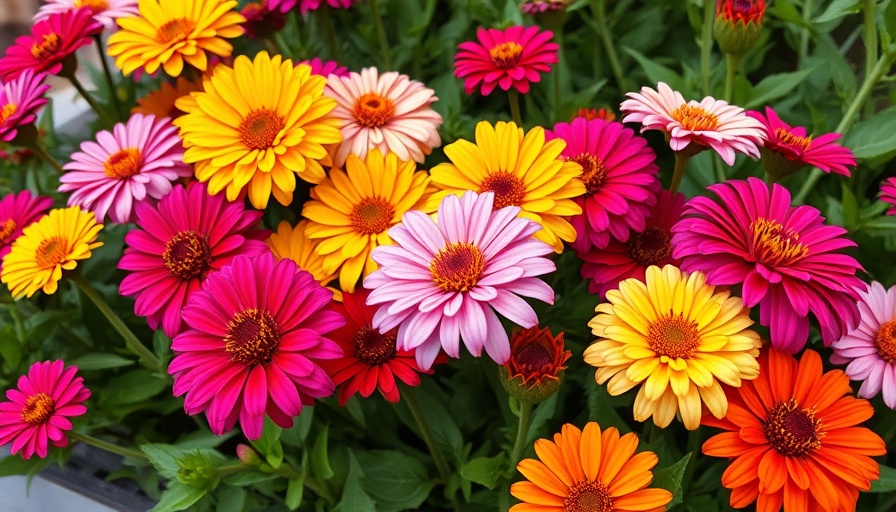
The Vibrant World of Zinnias: Your Ultimate Guide
Zinnias are not just flowers; they are a celebration of color and life, making them a quintessential choice for any flower garden. Whether you are a novice gardener or an expert botanist, zinnias can bring vivid splashes of color to your flowerbed or patio with their stunning blooms and diverse varieties.
Top Reasons to Love Zinnias
Zinnias are among the most beloved flowers in gardens across the United States and beyond. They bloom from early summer until the first frost, showcasing a dazzling array of colors. With their ease of care and ability to flourish in a range of climates—zones 3 to 10—they are perfect for everyone, from urban gardeners to those living in suburban expanses.
A Closer Look at the Best Zinnia Varieties
This selection includes both tall varieties ideal for cutting gardens and dwarf types perfect for containers. The 'Big Red' zinnia, known for its striking scarlet color, is an excellent summer bloomer that requires only about 35 days from germination to flowering. This attribute makes it a favorite among those looking to fill their gardens quickly.
- 1. Big Red: With flowers up to six inches wide, this dahlia-flowered type is not just a showstopper but also grows up to 36 inches tall. Its vibrant blooms transition from deep red to orange as they mature, adding depth to any garden arrangement. - 2. Cactus Flowered Mix: This mix features petals that are quill-like and slightly curved, producing a range of colors. It's a sturdy choice, reaching heights of 30 inches and spreading to a foot and a half wide, blooming continuously for approximately ten weeks. - 3. California Giant Mix: For those who favor larger flowers, this variant can tower up to four feet tall, producing blooms that can grow five to six inches across in an explosion of reds and yellows.Designing with Zinnias: Landscaping Ideas
Zinnias are versatile and can complement various garden designs. Their height and multitude of colors make them perfect for mixed borders, adding a colorful contrast against ornamental grasses and shrubs. Additionally, they do particularly well in raised garden beds or larger containers on patios, where they can be appreciated up close.
For an eye-catching effect, consider pairing zinnias with other flowers. Marigolds and sunflowers blend beautifully, creating a dynamic and pollinator-friendly environment. Mixing different zinnia varieties enhances the overall visual impact and ensures blooms throughout the growing season.
Practical Care Tips for Healthy Zinnias
Successfully growing zinnias involves basic gardening tips. Here are some practical insights for flourishing plants:
- Water: While zinnias are drought-tolerant, consistent watering during dry spells is crucial for blooming.
- Soil: They prefer well-draining soil enriched with organic matter, which supports healthy growth.
- Fertilization: Regular feeding, especially at the beginning of the growing season, promotes lush foliage and vibrant blooms.
Exploring the Emotional Connection to Zinnias
Flowers carry emotional significance, and zinnias are no exception. Representing endurance and lasting friendship, they can convey heartfelt sentiments in floral arrangements. Whether they're included in a bouquet for a loved one's birthday or a thank-you gift, zinnias speak a language of warmth and joy. Their beauty transcends mere aesthetics, fostering a deeper connection to nature and the relationships we cultivate.
Conclusion: Cultivating Your Zinnia Garden
As you consider adding zinnias to your garden this year, think about their many varieties and how each can contribute to your outdoor space. Whether looking to enhance your landscape with color or create stunning floral arrangements, zinnias offer both beauty and practicality. Let your garden reflect your personality and creativity by exploring the vibrant world of zinnias!
 Add Row
Add Row  Add
Add 




Write A Comment